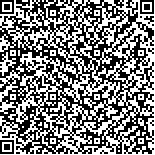牛国辉,王军,张晓莉,等.镜像视觉反馈训练对痉挛型偏瘫脑性瘫痪患儿上肢功能的影响[J].中华物理医学与康复杂志,2022,44(8):707-711
扫码阅读全文

|
| 镜像视觉反馈训练对痉挛型偏瘫脑性瘫痪患儿上肢功能的影响 |
|
| |
| DOI:10.3760/cma.j.issn.0254-1424.2022.08.008 |
| 中文关键词: 镜像视觉反馈 偏瘫 脑性瘫痪 上肢运动功能 |
| 英文关键词: Mirror visual feedback Hemiplegia Cerebral palsy Upper limb motor function |
| 基金项目:河南省医学科技攻关计划省部共建项目(SBGJ2018047) |
|
| 摘要点击次数: 4134 |
| 全文下载次数: 4341 |
| 中文摘要: |
| 目的 观察镜像视觉反馈训练对痉挛型偏瘫脑性瘫痪(简称脑瘫)患儿上肢功能及肌张力的影响。 方法 纳入符合条件的2~5岁痉挛型偏瘫脑瘫患儿76例,采用随机数字表法分为对照组和治疗组,每组38例。对照组失访2例,未完成6个月康复治疗3例;治疗组失访1例,未完成6个月康复治疗3例;最终纳入对照组33例,治疗组34例。对照组进行常规康复治疗,包括作业疗法、运动疗法、推拿、物理因子治疗等,每项治疗每日1次,每次30 min,每周5次,治疗3周为1个疗程,疗程结束后休息1周开始下个疗程康复治疗,共治疗6个疗程(6个月);治疗组在常规康复治疗基础上加用镜像视觉反馈训练,治疗时间为每日1次,每次30 min,每周5次,治疗3周为1个疗程,疗程结束后休息1周开始下个疗程康复治疗,共治疗6个疗程(6个月)。分别于治疗前及治疗3个月后和治疗6个月后,采用Fugl-Meyer运动功能评定量表(FMA)、Peabody精细运动发育量表(PDMS-FM)、改良 Ashworth评定量表(MAS)、肌电积分值(iEMG)对2组患儿的上肢运动功能、精细运动功能和肌张力进行评估。 结果 治疗3个月和治疗6个月后,2组患儿FMA评分[治疗组(32.38±4.79)和(38.24±4.83)分;对照组(28.30±5.68)和(32.79±5.49)分]、PDMS-FM总评分[治疗组(123.74±16.54)和(145.68±13.43)分;对照组(111.21±17.62)和(123.94±15.83)分]、抓握能力评分[治疗组(31.68±6.28)和(37.41±5.39)分;对照组(26.79±5.74)和(31.82±4.98)分]和视觉运动整合评分[治疗组(92.06±11.34)和(108.26±8.40)分;对照组(84.42±12.12)和(92.12±11.08)分]分别与治疗前组内比较及治疗后同时间点组间比较,差异均有统计学意义(P<0.05)。MAS评分[治疗组(2.26±0.83)和(1.85±0.89)分;对照组(2.18±0.88)和(1.82±0.95)分]和iEMG值[治疗组(16.27±3.17)和(14.26±3.50)μV;对照组(16.88±3.15)和(15.00±3.09)μV]与治疗前组内比较,差异有统计学意义(P<0.05),但治疗后同时间点组间比较,差异无统计学意义(P>0.05)。 结论 镜像视觉反馈训练能够有效改善痉挛型偏瘫脑瘫患儿的上肢功能,但不能降低肌张力。 |
| 英文摘要: |
| Objective To observe the effect of mirror visual feedback training on upper limb function and muscle tension in children with spastic hemiplegia resulting from cerebral palsy (SHCP). Methods Seventy-six children aged 2-5 with SHCP were randomly divided into a control group of 33 and a treatment group 34. All were given routine occupational therapy, physical therapy, massage and physical agents. Each therapy session lasted 30 minutes daily, 5 times a week over 3 weeks as a course of treatment. There was a one week interval after each of 6 courses, so the total treatment lasted 6 months. The treatment group was additionally trained with mirror visual feedback with the same schedule. Before, as well as after 3 and 6 months of treatment, each patient′s upper limb motor function, fine motor function and muscle tone were evaluated using the Fugl-Meyer motor function assessment scale (FMA), the Peabody fine motor development scales (PDMS-FM), the modified Ashworth scale (MAS) and integrated electromyograms (iEMGs). Results There were no significant differences between the two groups before treatment. After both 3 and 6 months significant improvement was observed in both groups′ average FMA score, PDMS-FM total score, grip, and visual motor integration. At both points the treatment group′s averages were significantly better than those of the control group. The average MAS and iEMG results, however, were not significantly different at either time point. Conclusions For children with spastic hemiplegia caused by cerebral palsy, mirror visual feedback training can effectively improve upper limb functioning, but it cannot reduce their muscle tone. |
|
查看全文
查看/发表评论 下载PDF阅读器 |
| 关闭 |
|
|
|